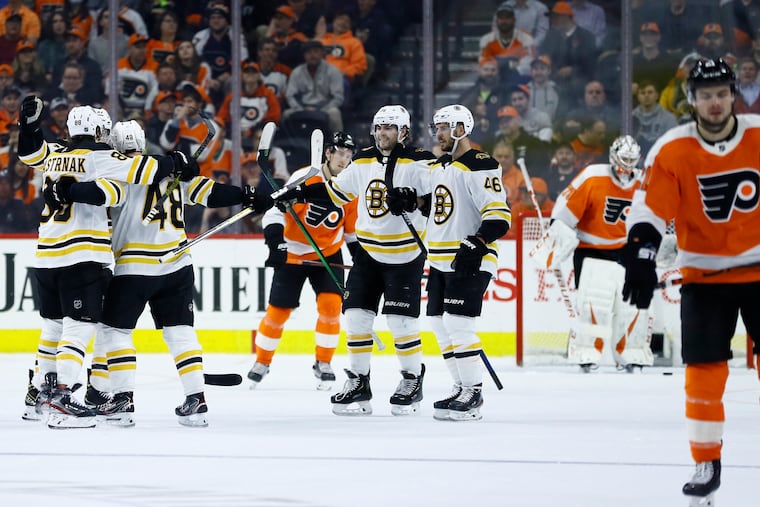Coronavirus makes public events and even private gatherings risky, experts say
If avoiding crowds of 5,000 were enough to contain coronavirus, as Philadelphia health officials suggested, cases wouldn't be multiplying rapidly in the U.S. Meanwhile, the Flyers and the Sixers played this week.

As the coronavirus crisis grows, health officials are struggling to strike the right tone between false reassurance and OMG, we’re doomed.
On Tuesday, Philadelphia’s leaders announced the city’s first coronavirus case and advised residents to “consider not attending public gatherings with more than 5,000″ people.
On Wednesday, a city health official acknowledged the randomness of that number, which would affect only massive events such as parades, and games or concerts in stadiums.
“What the right number is and where you make the cutoff I think is somewhat arbitrary,” said Steven Alles, director of the Division of Disease Control for the Philadelphia Department of Public Health. “We just don’t have that much disease [in the city]. The risk is very low still."
» READ MORE: Scores of local events have been cancelled due to coronavirus. We have the highlights.
Hard-hit Washington state, with most of the nation’s coronavirus deaths, on Wednesday banned all gatherings of more than 250 people.
Meanwhile, more and more experts — including Anthony Fauci, director of the National Institute of Allergy and Infectious Diseases — advise taking precautions as if the dangerous respiratory virus is spreading undetected, even in places like Philadelphia with few diagnosed cases.
Those precautions involve “social distancing," meaning minimizing close contact (defined as within 6 feet) with other people. While big gatherings increase the risk that lots of people could be exposed to infection — especially events where cheering could mean saliva flying — there may be no safety in small numbers.
“There’s no threshold. This is a time when if you’re invited to a dinner party with five people, you should say, ‘No thanks,’ ” said Carolyn C. Cannuscio, a social epidemiologist at the University of Pennsylvania’s Perelman School of Medicine.
Valerie Arkoosh, a physician and public health expert who chairs the Montgomery County Commissioners, offered a more nuanced set of considerations. An event that draws numerous people from out of state is in a different category from a large dinner party for people who all live in the neighborhood.
“I don’t really think the number is the point," Arkoosh said. "I think the point is who’s coming, and who has an elderly parent at home, and who may be at risk.”
» READ MORE: Coronavirus testing is expanding but likely not fast enough to contain undetected spread
Cannuscio at Penn was dismayed by city officials’ implication that gatherings of fewer than 5,000 are low risk.
“They need to walk back that number,” she said. “That number will be talked about in public health classes for decades to come. Everybody is vulnerable to making mistakes in communications, but I want our leaders to recognize that we need to reduce social contacts. I know I might sound hysterical, but I recognize the public doesn’t understand the importance of social distancing.”
Social distancing is important because it can help reduce and spread out infections over a longer period of time, public health experts say. That can keep the health-care system from being overwhelmed, prevent shortages of medical supplies, and buy time to develop a vaccine and therapies.
Massachusetts is a chilling example of what can happen when people in a place with few known cases assume a gathering will be low risk. On Wednesday, that state announced 51 new coronavirus cases, bringing the total to 92. Most of those cases — 70 — have been traced to a Biogen conference attended by about 175 people, at the Boston Marriott Long Wharf.
Public health experts agree that the elderly and people with chronic, immune-weakening conditions such as cancer, diabetes, and heart disease are particularly at risk of severe coronavirus illness. They should stay home and away from public places. Alles stressed that point Wednesday.
Experts also agree that events with lots of shouting, cheering, and drinking — such as Philadelphia’s notorious St. Patrick’s Day event, the Erin Express bar-hopping bus — are particularly risky because of the increased chance of spewing infectious spit or airborne droplets.
But the frightening issue of “community spread” — person-to-person transmission of an illness without a known source — is trickier. Because only people with respiratory symptoms are being tested for the coronavirus, no one really knows how widespread the germ is. That leaves officials wondering whether to err on the side of urging stringent social distancing, knowing that avoiding human contact is difficult and disruptive.
» READ MORE: Philadelphia arts and culture groups begin canceling, postponing performances
Alles’ boss, Health Commissioner Thomas Farley, on Tuesday said the virus may be spreading undetected in Philadelphia because that may be happening just to the north in Montgomery County. Meanwhile, Pennsylvania Health Secretary Rachel Levine has said the state does not have community spread — yet.
Cannuscio is behaving as if the virus is already widespread locally. In addition to not traveling, she is teaching her Penn classes remotely online, and staying 6 feet away from colleagues, neighbors, and others. She also has worked with her children’s schools to adopt strategies — such as lunches in classrooms, outdoor lessons, no visitors, and rotating teachers rather than students through classrooms — to minimize social contacts.
“I’ve seen it coming. I’ve been talking about it since January,” she said. “It’s time to radically change our behavior. Life should not be treated as normal."
Staff writers Tom Avril and Allison Steele contributed to this article.